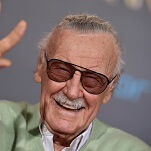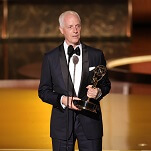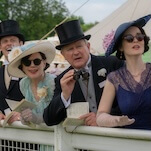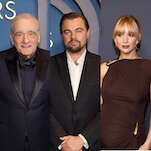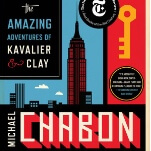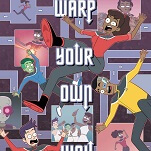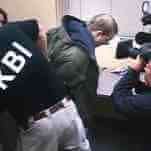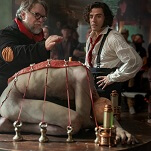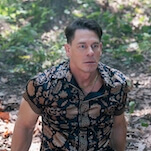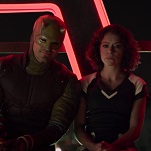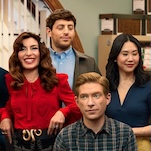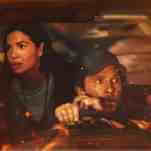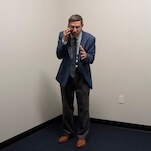We need a TCM for television

Let’s take a little trip through time, back to the bygone days of the late ’90s and early ’00s. Back then, TV Land was still showing the top television shows of the ’50s, ’60s, and ’70s, and regularly airing special programming blocks like “Box Set,” which dug up TV obscurities. Local stations and basic-cable superstations were filling the afternoons and late nights with the best of ’80s and ’90s sitcoms, while Trio had its “Brilliant But Cancelled” series, in conjunction with a daily schedule of television curios. Game Show Network was staying true to its name, almost exclusively showing beloved old game shows, along with packages of rarities. And the major studios had just figured out that fans would rather buy complete seasons of TV series on DVD than slim “best of” collections. In short: If you were a TV-phile 10 years ago, you were in clover.
Jump ahead to now, as cable channels are developing more original series, and buying packages of more recent TV hits, at the same time that a general slump in DVD sales (coupled with an emphasis on Blu-ray) has significantly stemmed the tide of vintage television making it to market. True, the news isn’t entirely dire. Shout! Factory, Timeless, and a few other niche DVD companies are doing their best to keep classic TV alive in the home-video arena, and there are some shows—like M*A*S*H, Cheers, and Andy Griffith—that remain perennially popular. Also, some local cable companies carry the likes of Me-TV and Retro Television Network, both of which offer programming a lot like the TV Land of a decade ago. Still, as someone who fervently believes that television is now and always has been a vital art form, I worry that a major part of our pop-culture heritage is being consigned to the archives and going unseen by the younger generations.
So here’s my proposed remedy: What the television medium needs is its own version of Turner Classic Movies. We already have an AMC for TV; that would be TV Land, which mixes original programming and recent hits with a smattering of the actual canon. What we don’t have is a channel that treats television with the respect that TCM affords to cinema. The programmers at TCM have access to an impressive library of movies to begin with, and they work to make deals with other media conglomerates so that they can air an ever-changing variety of quality films, arranged into little mini-festivals, frequently introduced by people who are knowledgeable and passionate about movie history. Why doesn’t TV have its own Robert Osborne to come out and tell us about the episode of Columbo we’re about to watch?
Look, I’m no naïf. I understand that TV Land and GSN and the rest of the home-entertainment industry are trying to maximize profit. And I understand that TCM survives in part because of its connections to the larger, more profitable Turner Broadcasting empire, and in part because it draws an affluent audience more likely to be impressed by Ernst Lubitsch than The Joey Bishop Show. If there were money to be made from filling up the cable spectrum with old TV, then all those channels I mentioned in the first paragraph wouldn’t have changed their programming models years ago (or wouldn’t have gone out of business, in the case of Trio).
But no one’s ever done a classic television channel the way I think it should be done. The emphasis in the past has been on nostalgia as an end in itself, where I’d rather see the “fun” side of TV integrated more closely with the “quality” side. There’s a misperception among many that television came of age as a medium the moment HBO aired the first episode of The Sopranos, and while I love that show—and mostly love what’s happened to TV in its wake—I find it short-sighted and insulting to suggest that TV producers didn’t know how to make a realistic cop show before The Shield or a smart sitcom before Arrested Development.
It’s that same mentality that’s re-imagined what constitutes “good TV”—considering it in terms of a long-form novel, not a weekly short story. These days, if I recommend a show like The Rockford Files or NewsRadio and I name a good mid-series episode to start with, I’m met with blank stares. If the show’s really a classic, shouldn’t a new viewer start with episode one and just watch the rest in order? A close analogy for this would be the way the late ’60s changed the way music-lovers think about albums. The albums-over-singles snobbery—well-meaning though it may be—means that if I tell a fellow rock fan that a greatest-hits collection is the best place to start with some artists, my friend assumes that either the band must not be very good or that I’m a dope. I don’t want that attitude to become the norm for television. There’s nothing wrong with a sitcom or a drama that’s better at stand-alone episodes than slow-building, serialized stories.








